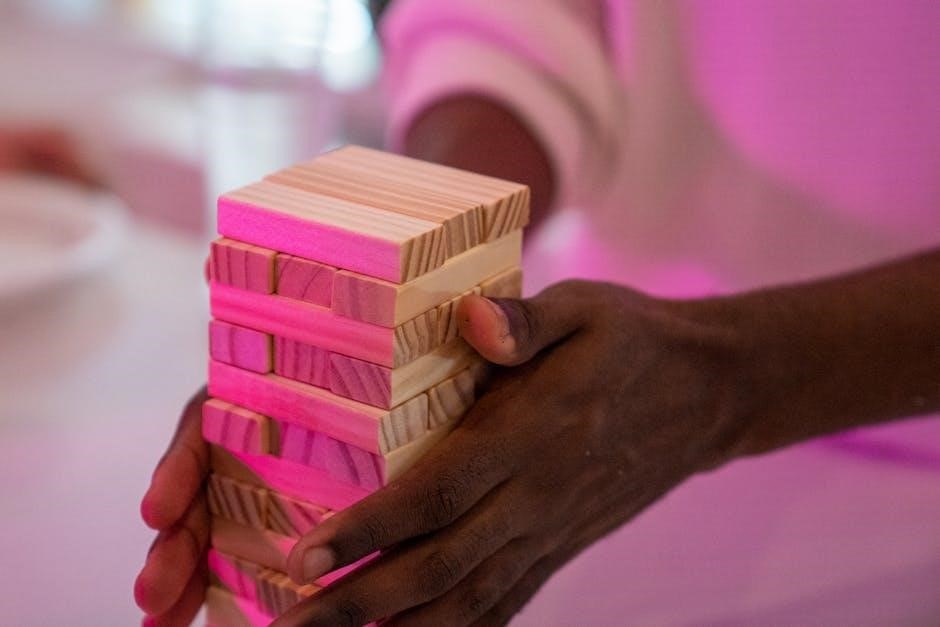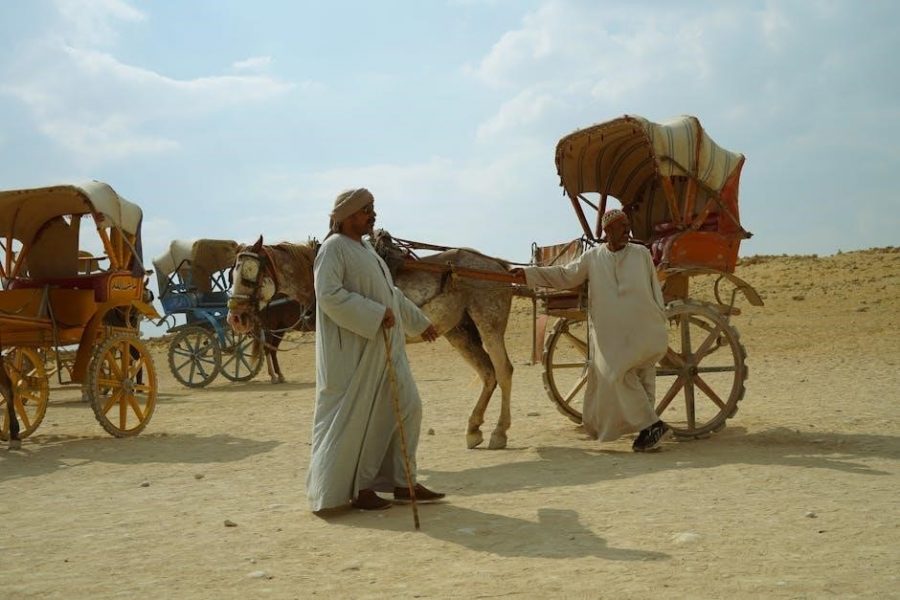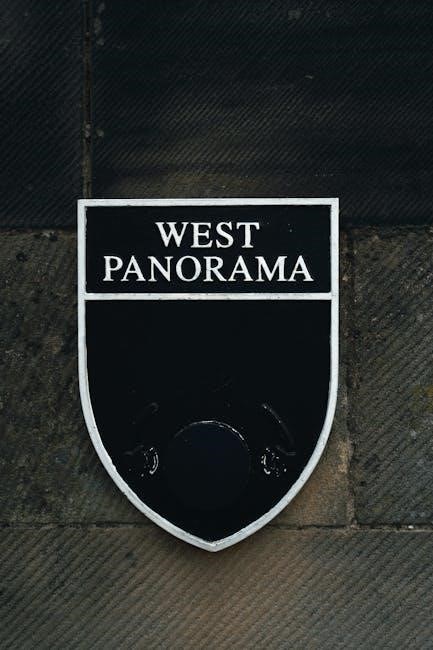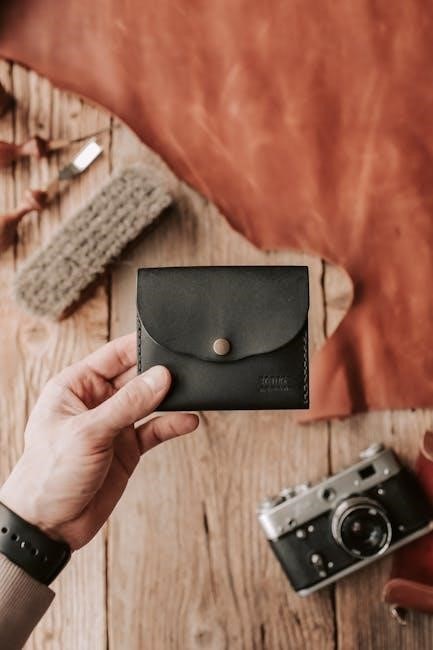The Milescraft Saw Guide is an innovative tool designed to transform circular and jigsaws into precise cutting instruments, offering universal compatibility and versatility for various woodworking tasks.

Key Features of the Milescraft Saw Guide
Universal compatibility with circular and jigsaws, adjustable guide system for precision cuts, durable construction, and versatility in making straight, angle, bevel, and rip cuts efficiently.
Universal Compatibility with Circular and Jigsaws
The Milescraft Saw Guide is designed to work seamlessly with both circular saws and jigsaws, offering a universal base plate system that adapts to various tool models. This compatibility ensures that users can achieve precise cuts across different projects, eliminating the need for multiple guides. Whether working with a circular saw for straight cuts or a jigsaw for curved edges, this guide enhances versatility and convenience in woodworking tasks.
Adjustable Guide System for Precision Cuts
The Milescraft Saw Guide features an adjustable system that ensures precision cuts by accommodating various saw blade widths and project requirements. With four bars of varying widths and special holding clips, it easily attaches to most circular and jigsaws, allowing for accurate alignment. This adaptability makes it ideal for achieving straight, angle, rip, and bevel cuts with minimal setup effort, enhancing overall cutting efficiency and consistency in woodworking projects.
Durable Construction for Long-Term Use
The Milescraft Saw Guide is built with durable materials, ensuring long-lasting performance. Its robust construction withstands rigorous use, making it a reliable tool for various woodworking projects. Designed to resist wear and tear, this guide maintains accuracy and consistency over time. Whether in the workshop or on-site, it delivers dependable results, enhancing your cutting efficiency and precision.

Advantages of Using the Milescraft Saw Guide
The Milescraft Saw Guide offers unmatched precision and versatility, enabling straight, angle, bevel, and rip cuts with ease. It eliminates the need for marking and measuring, saving time and ensuring accuracy. Compatible with both circular and jigsaws, it’s ideal for woodworking projects, home improvements, and on-site panel cutting, delivering consistent results every time.
Precision Cutting Without Freehand Risks
The Milescraft Saw Guide eliminates freehand cutting errors, ensuring precise, repeatable cuts. It enables users to achieve straight, angle, bevel, and rip cuts with unmatched accuracy. By aligning the saw perfectly, it reduces the risk of uneven edges and waste material. This tool is particularly useful for woodworking projects and on-site panel cutting, where consistency is key. Its ability to transform ordinary saws into precision instruments makes it an essential accessory for professionals and DIYers alike.
Versatility in Various Woodworking Applications
The Milescraft Saw Guide excels in various woodworking tasks, offering adaptability for cabinet making, home improvements, and on-site projects. It supports straight, angle, and bevel cuts, making it ideal for diverse applications. Its portability and ease of use enhance productivity, allowing precise cuts in different settings without compromising accuracy. This tool is particularly beneficial for woodworking projects requiring consistent results, making it a versatile addition to any workshop or job site.
Time Efficiency in Cutting Processes
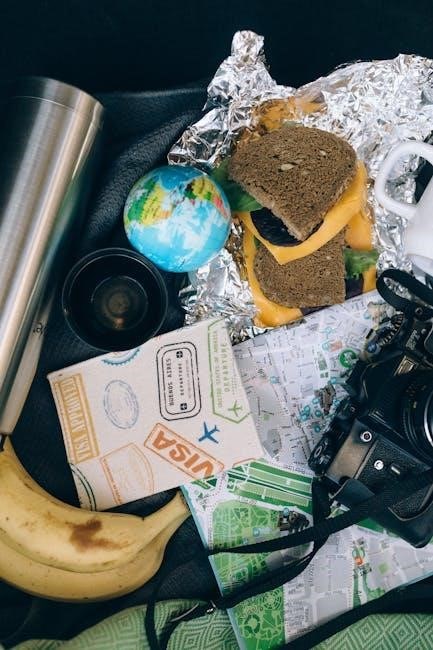
The Milescraft Saw Guide significantly enhances time efficiency by eliminating the need for marking, measuring, and layout lines. Its universal base plate system allows quick setup, enabling precise cuts without delays. This tool streamlines workflows, especially for repetitive tasks, making it ideal for professionals and DIYers seeking to optimize their cutting processes while maintaining accuracy and consistency in various projects.

How the Milescraft Saw Guide Works
The Milescraft Saw Guide operates by attaching to circular or jigsaws, providing a universal base plate system that ensures precise cuts without marking or measuring.
Basic Operation and Setup
Setting up the Milescraft Saw Guide involves attaching it to your circular or jigsaw using the universal base plate and holding clips. Calibrate the guide to ensure alignment with your saw blade for precise cuts. Once secured, the system allows for straight, angled, or beveled cuts without the need for marking or measuring. The guide’s design ensures stability and accuracy, making it ideal for various woodworking applications. Its portability and ease of use make it suitable for both workshop and on-site projects.
Achieving Straight, Angle, Bevel, and Rip Cuts
The Milescraft Saw Guide excels at enabling precise cuts, including straight, angled, beveled, and rip cuts. Its adjustable fence and angle settings allow for customizable configurations, ensuring accuracy. The guide eliminates the need for manual marking, making it ideal for intricate woodworking projects. Whether cutting through large panels or angled surfaces, the system ensures consistent results, enhancing productivity and reducing waste in various woodworking applications.

Applications of the Milescraft Saw Guide
The Milescraft Saw Guide is ideal for woodworking projects, cabinet making, and on-site panel cutting. It simplifies home improvement tasks, ensuring precise cuts in various materials efficiently and reliably.
Woodworking Projects and Cabinet Making
The Milescraft Saw Guide excels in woodworking projects and cabinet making, enabling precise straight, angle, bevel, and rip cuts. Its universal compatibility with circular and jigsaws ensures versatility for crafting custom cabinets, furniture, and intricate designs. By eliminating the need for marking and measuring, it streamlines workflows, making it an essential tool for professionals and hobbyists seeking accuracy and efficiency in their woodworking endeavors.
On-Site Panel Cutting and Home Improvements
The Milescraft Saw Guide is ideal for on-site panel cutting and home improvements, offering portability and precision. Its universal design works seamlessly with circular and jigsaws, making it perfect for cutting large panels or angled cuts in tight spaces. Whether renovating a room or tackling a DIY project, the guide ensures accurate results, eliminating the need for complex setups and enabling efficient, professional-grade finishes every time.
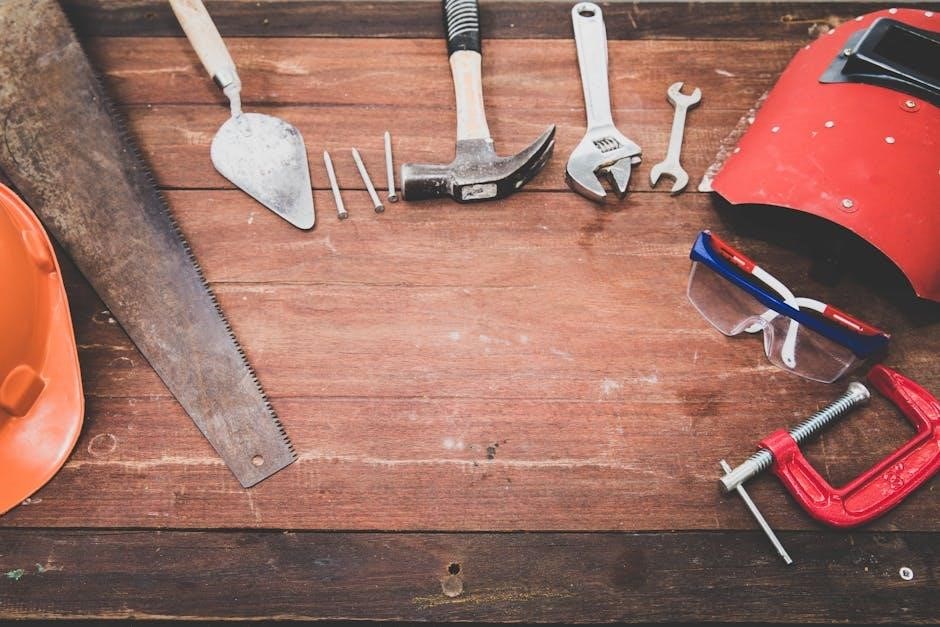
Setting Up the Milescraft Saw Guide
Setting up the Milescraft Saw Guide involves initial calibration and alignment to ensure accuracy. Attach the guide to your circular or jigsaw, following the manufacturer’s instructions for precise cuts.
Initial Calibration and Alignment
Calibrating the Milescraft Saw Guide ensures precise cuts. Start by aligning the guide with your saw’s base plate, ensuring it’s parallel to the blade. Secure the guide using the provided holding clips. Test alignment by making a small cut on scrap material. Adjust the guide as needed until the edge is straight and accurate. Proper calibration is crucial for achieving consistent results in all woodworking projects.
Attaching the Guide to Your Circular or Jigsaw
Attaching the Milescraft Saw Guide is straightforward. Start by aligning the guide’s base plate with your saw’s base, ensuring proper fit. Secure it using the provided holding clips, adjusting for a snug connection. For circular saws, attach the guide to the fence slot, while jigsaws may require additional adapters. This tool-free setup ensures compatibility and ease of use, allowing precise cuts across various woodworking projects.

Troubleshooting Common Issues
Address alignment issues by recalibrating the guide. Check for worn parts and replace them. Ensure proper attachment to avoid wobbling, and clean the guide regularly for optimal performance.
Addressing Alignment and Accuracy Problems
Ensure the guide is properly calibrated and aligned with your saw. Check for loose attachments and tighten as needed. Use the correct blade for the task and verify the guide’s positioning before cutting. Regularly inspect and clean the guide to maintain accuracy. If issues persist, refer to the manufacturer’s troubleshooting guide or seek professional assistance to restore optimal performance and precision cutting capabilities.
Maintenance Tips for Optimal Performance
Regularly clean the guide to remove dust and debris. Check for wear and tear on the base plate and alignment brackets. Lubricate moving parts to ensure smooth operation. Store the guide in a dry place to prevent rust. Inspect and tighten all screws and bolts before use. Replace worn-out components promptly to maintain accuracy. Follow the manufacturer’s recommendations for upkeep to extend the tool’s lifespan and ensure consistent performance.

Comparing the Milescraft Saw Guide with Other Tools
The Milescraft Saw Guide offers universal compatibility and precision cutting, outperforming standard edge guides and track saws with its versatility and ease of use.
Track Saws vs. Milescraft Saw Guide
The Milescraft Saw Guide offers a versatile alternative to dedicated track saws, providing precision cuts with circular or jigsaws. Unlike track saws, it eliminates the need for a separate tool, adapting to existing equipment. Its universal base plate and adjustable guide system ensure accuracy, while its portability makes it ideal for workshops or on-site projects. This cost-effective solution delivers professional results without the investment in a standalone track saw system.
Standard Edge Guides vs. Milescraft Saw Guide
While standard edge guides offer basic alignment for straight cuts, the Milescraft Saw Guide excels with its universal compatibility and adjustable system. It accommodates both circular and jigsaws, providing versatility for various cutting tasks. Unlike standard guides, it eliminates the need for marking and measuring, enabling faster and more precise results. Its durable construction and adaptability make it a superior choice for professionals and DIYers seeking consistent, high-quality cuts in diverse woodworking projects.

User Reviews and Feedback
Users praise the Milescraft Saw Guide for its precision and versatility, though some note initial setup challenges. Overall, it’s lauded as a valuable tool for consistent cuts.
Positive Experiences and Success Stories
Many users commend the Milescraft Saw Guide for transforming their circular and jigsaws into precise cutting tools. It excels in woodworking projects, cabinetry, and home improvements, ensuring straight, accurate cuts. Homeowners and professionals alike praise its versatility and reliability, making it an essential accessory for achieving professional-grade results effortlessly. The guide’s ability to eliminate freehand cutting errors has made it a favorite among DIY enthusiasts and seasoned woodworkers seeking consistent outcomes.
Areas for Improvement and Common Complaints
Some users have noted that the Milescraft Saw Guide may not fit perfectly with all circular saw models, leading to occasional alignment issues. Additionally, a few customers found the setup process somewhat tricky, requiring extra time for calibration. While the guide is durable, there have been suggestions for improving the build quality and providing clearer instructions to enhance user experience and ensure consistent performance across different tools and projects.
The Milescraft Saw Guide is a valuable accessory for circular and jigsaws, offering precision, versatility, and durability. Its universal compatibility and ability to make straight, angle, bevel, and rip cuts make it ideal for woodworking projects and home improvements. While some users note minor setup challenges, the guide remains a practical tool for achieving professional-grade results with ease and consistency, making it a worthwhile investment for both professionals and DIY enthusiasts alike.









